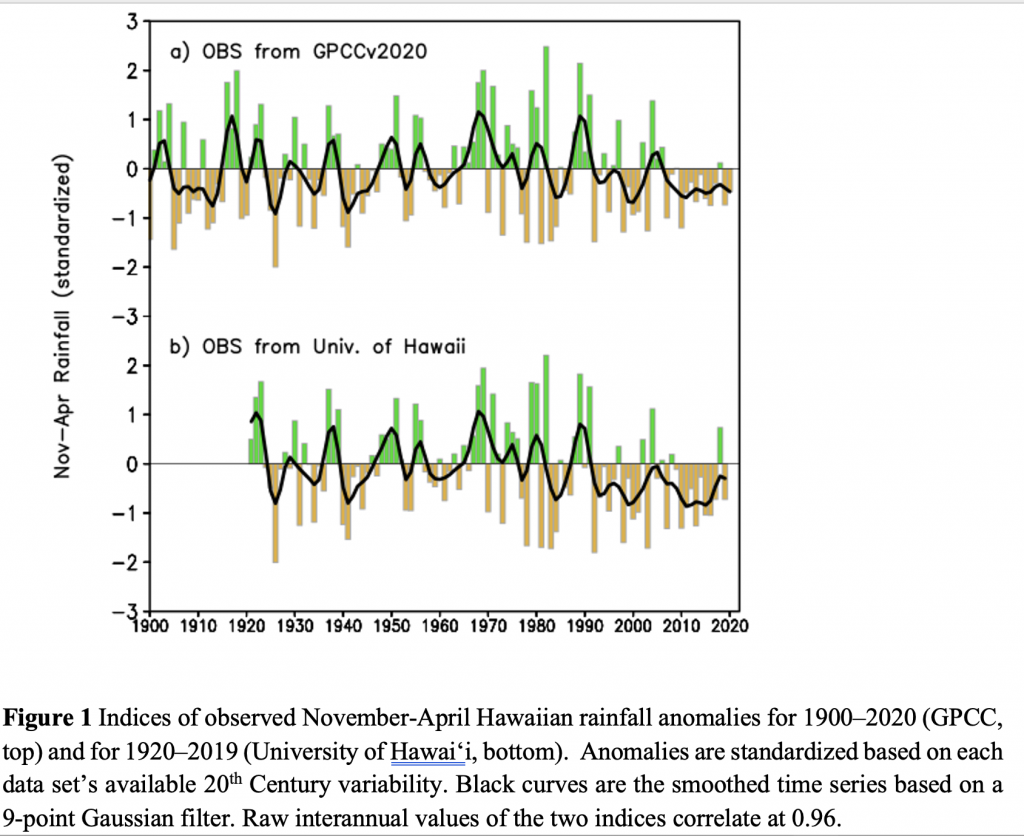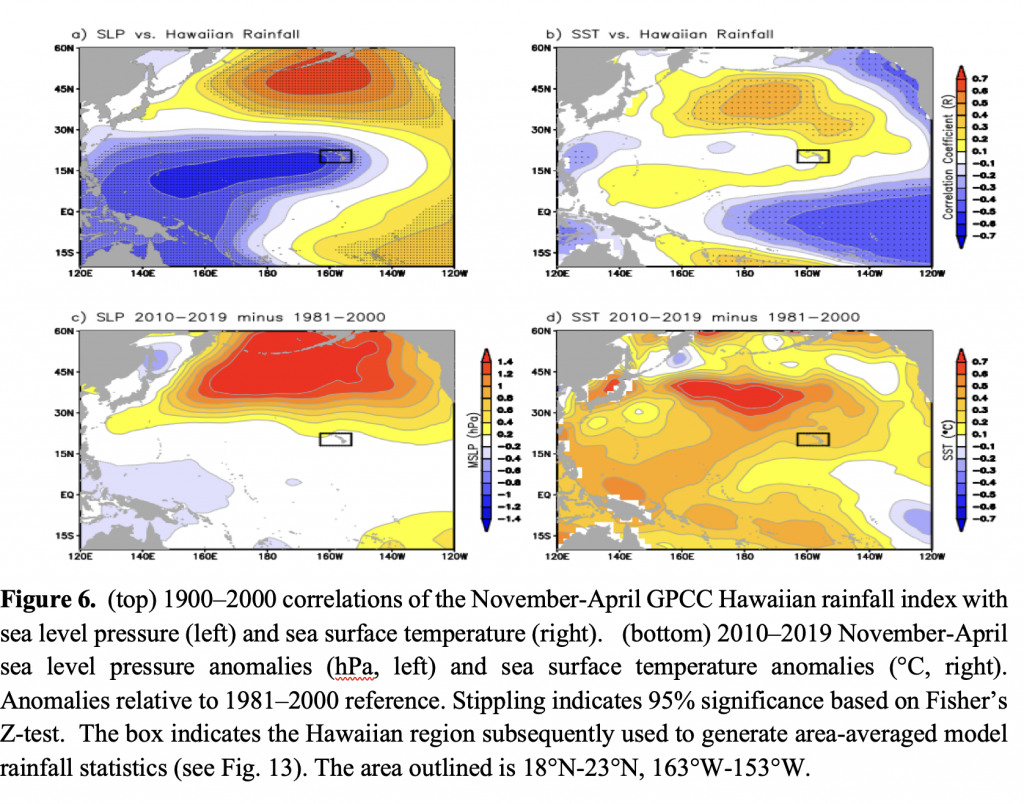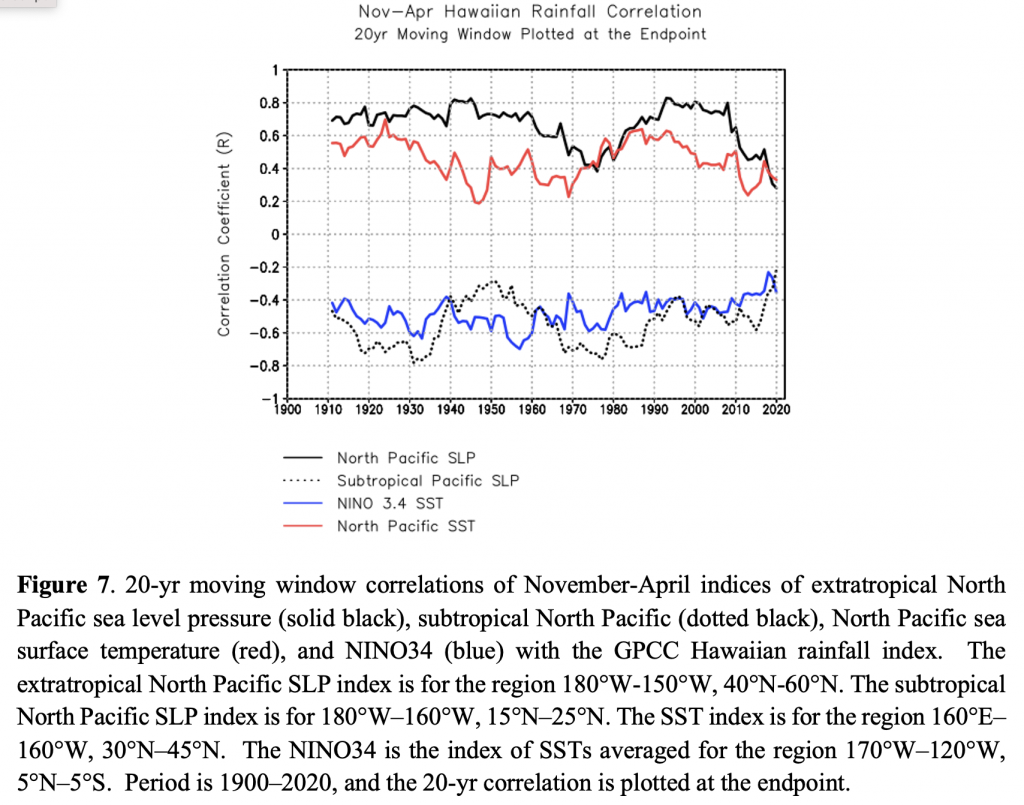Contributed by Henry Diaz (hfdiaz@hawaii.edu)
Read the full article: https://journals.ametsoc.org/view/journals/clim/35/13/JCLI-D-21-0754.1.xml
Hawai‘i’s recent drought is among the most severe on record. Wet-season (November-April) rainfall deficits during 2010–2019 rank second lowest among consecutive 10-yr periods since 1900. Various lines of empirical and model evidence indicate a principal natural atmospheric cause for the low rainfall, mostly unrelated to either internal oceanic variability or external forcing.

Empirical analysis reveals traditional factors favored wetness not drought in recent decades, including a cold phase of the Pacific Decadal Oscillation in sea surface temperatures (SSTs) and a weakened Aleutian low in atmospheric circulation. But correlations of Hawaiian rainfall with patterns of Pacific sea level pressure and SSTs that explained a majority of its variability during the 20th Century collapsed in the 21st Century. Atmospheric model simulations indicate a forced decadal signal (2010–2019 vs 1981–2000) of Aleutian low weakening, consistent with recent observed North Pacific circulation. However, model ensemble means do not generate reduced Hawaiian rainfall indicating that neither oceanic boundary forcing nor a weakened Aleutian low caused recent low Hawaiian rainfall.
Additional atmospheric model experiments explored the role of anthropogenic forcing. These reveal a strong sensitivity of Hawaiian rainfall to details of long-term SST change patterns. Under an assumption that anthropogenic forcing drives zonally uniform SST warming, Hawaiian rainfall declines, with a range 3%–9% among three models. Under an assumption that anthropogenic forcing also increases the equatorial Pacific zonal SST gradient, Hawaiian rainfall increases 2%–6%. Large spread among ensemble members indicates that neither forced signals are detectable.



